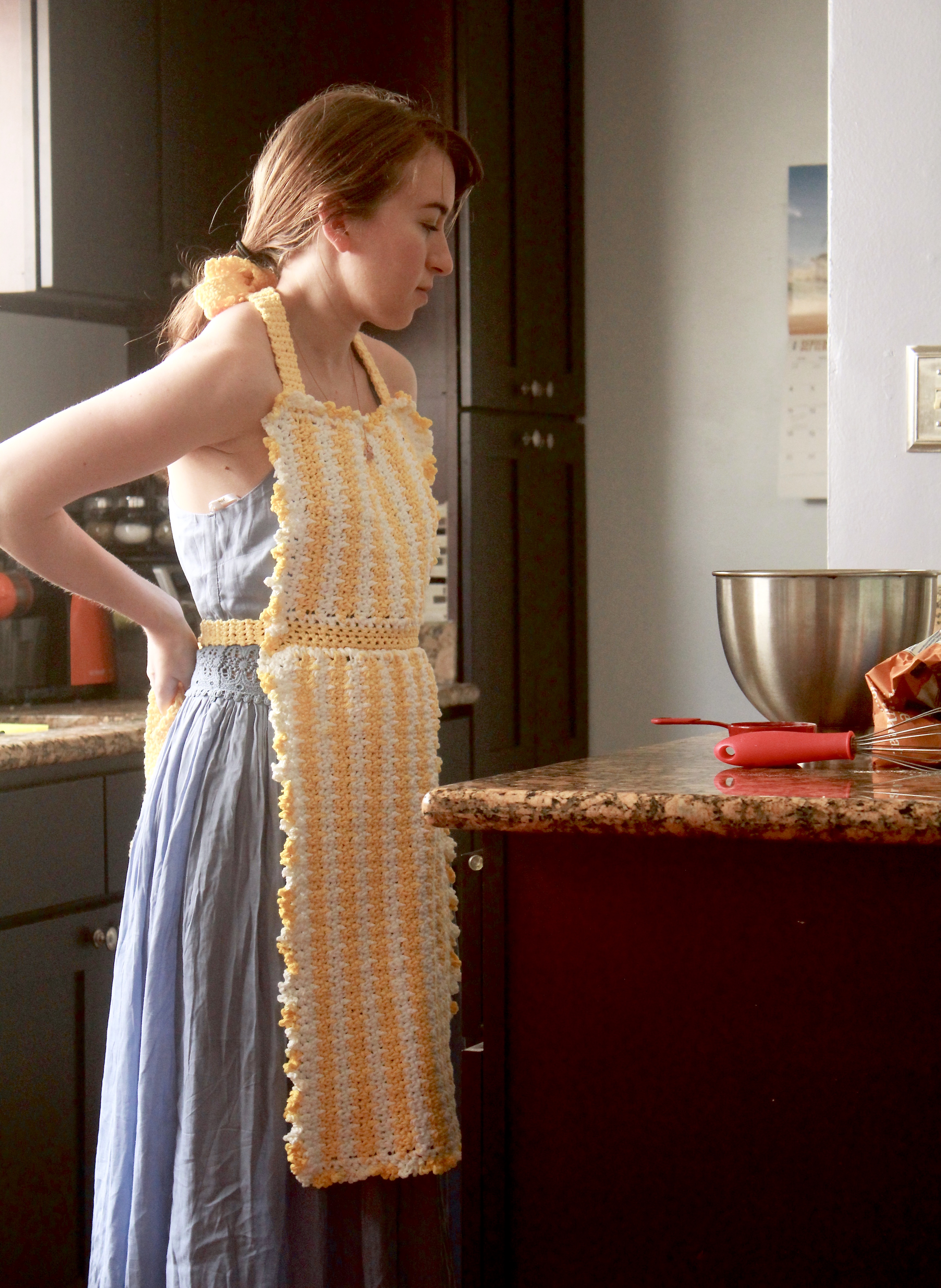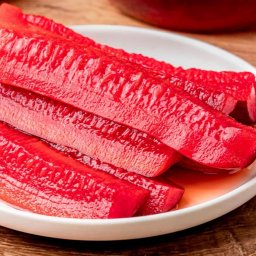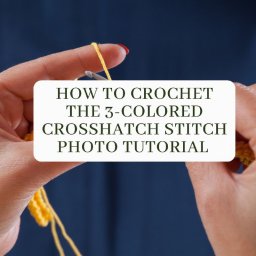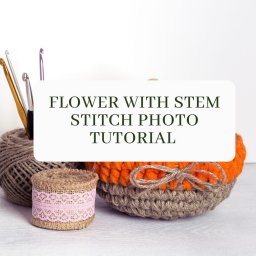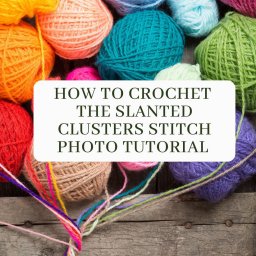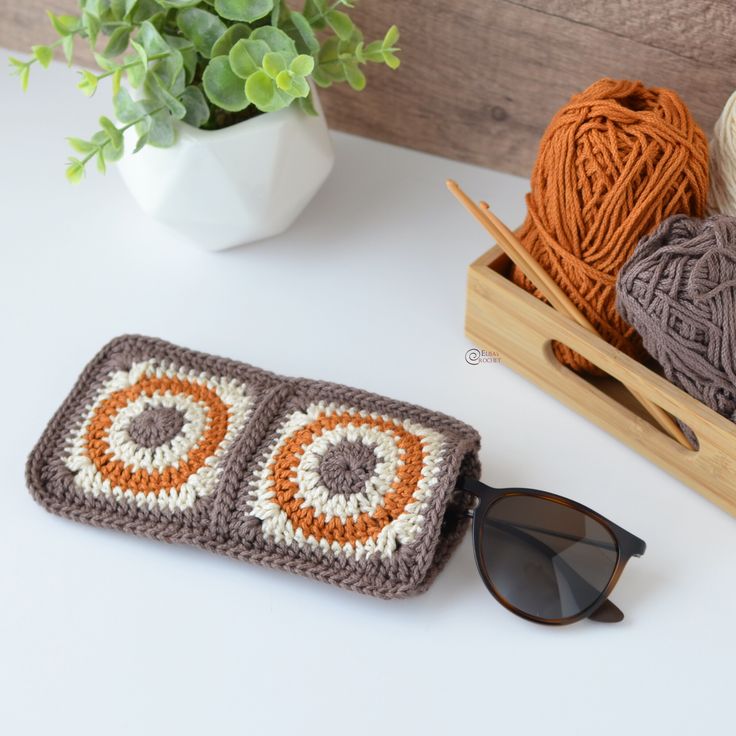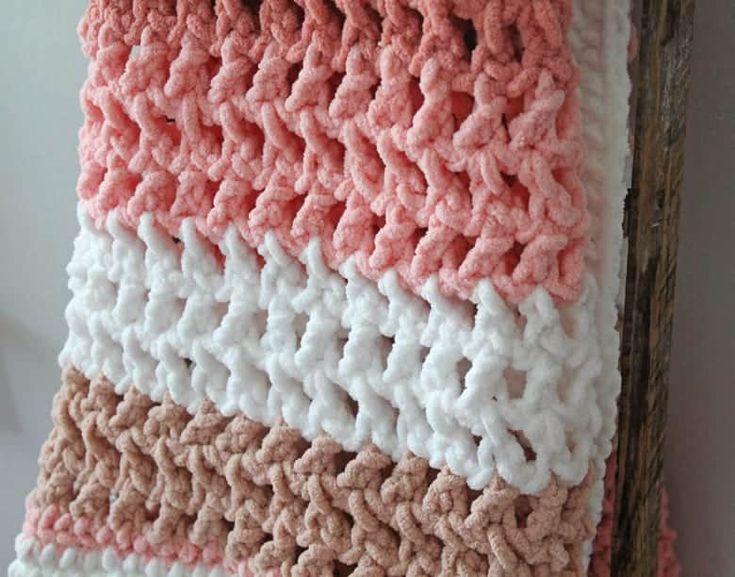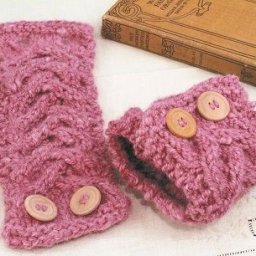Create the Charming Lemon Drop Apron: A Perfect Crochet Project for All Kitchen Enthusiasts
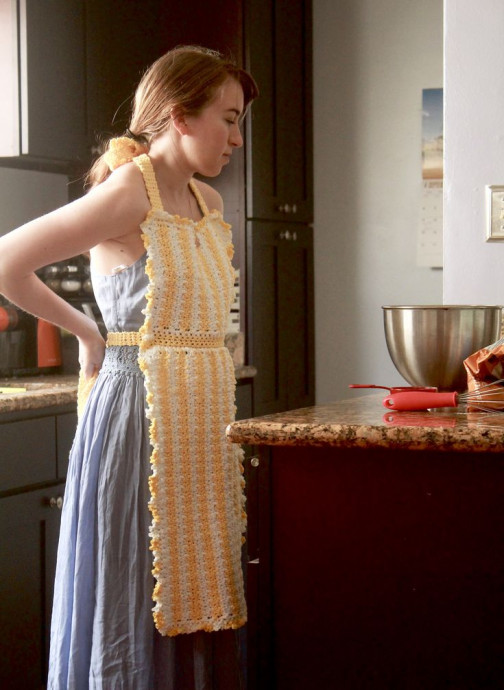
Introduction
Crochet The Lemon Drop Apron is a delightful project that perfectly combines style and functionality. The sunny yellow color of the apron will brighten up your kitchen and bring a pop of cheer to your cooking routine. With its classic design and intricate crochet details, this apron is not just a kitchen accessory but a fashion statement too.
Materials
- Lily Sugar and Cream Cotton in Country Yellow
- Lily Sugar and Cream Cotton in Daisy Ombre
- Lily Sugar and Cream Cotton in White
- 4.00 Crochet Hook
- I used a Furls Crochet Hook
Measurements
- Across the chest
- Underarm to Waist
- Waist to Desired Length
- Hip to Hip
Gauge
- Lemon Peel Stitch – 3 stitches x 2 rows = 1″ x 1″
- Single Crochet – 3 stitches x 4 rows – 1″ x 1″
Abbreviations
- LPS – Lemon Peel Stitch (you only need to know how to SC and DC for this stitch)
- CH – Chain
- C1 – Color 1
- C2 – Color 2
- C3 – Color 3 (The ombre)
(Obvious you don’t have to use the same colors that I chose to, so choose whatever two colors that you like together!)
This top is comprised of two sections sewn together, the top half that will be covering up your chest and then the lower half which will be covering your waist to the length that you wish the apron to cover.
Top Section
This top section is going to be the size of your “Underarm to the Waist” measurement and your “Across the Chest” measurement.
Foundation
Working with C1, chain an even amount of stitches for your foundation chain that is equal to your “Underarm to Waist” measurement. Working an even number is necessary for the lemon peel stitch. Work one extra chain (this will be your turning chain).
Row 1:
- SC into the second chain from the hook
- DC in the next stitch
- SC in the next stitch
- Repeat steps 2-3 until you reach the end of the row (you should be ending on a DC)
Chain 1 and turn
Row 2:
Almost identical to Row 1, however you are going to be switching colors at the end of the last stitch.
- SC into the first stitch
- DC in the next stitch
- SC in the next stitch
Repeat steps 2-3 until your last stitch. When working your last DC you will be switching to your C2. In order to do this, you will work your DC as normal, but instead of pulling through the last two loops on your hook with the same color as you usually would, pull through those last two loops on your hook with your C2 color. This will help the color changes flow more seamlessly.
Chain 1 with your new C2 colors and turn.
Repeat Rows 1 and 2 until your Top Section is at your “Across the Chest” measurement. Ultimately you are alternately working each color for 2 rows to create the vertical stripes. Make sure your first and last rows are the same color (C1) so that the stripes look even.
When you have reached this measurement, take your C1 and work SC stitches evenly all around the edges of the piece to clean up your edges.
Bottom Section
This is going to be worked just like the top section but it will be bigger. This section should be the size of your “Hip to Hip” measurement and your “Waist to Desired Length” measurement.
Foundation
Working with C1, chain an even amount of stitches for your foundation chain that is equal to your “Waist to Desired Length” measurement. Working an even number is necessary for the lemon peel stitch. Work one extra chain (this will be your turning chain).
Row 1:
- SC into the second chain from the hook
- DC in the next stitch
- SC in the next stitch
- Repeat steps 2-3 until you reach the end of the row (you should be ending on a DC)
Chain 1 and turn
Row 2:
Almost identical to Row 1, however you are going to be switching colors at the end of the last stitch.
- SC into the first stitch
- DC in the next stitch
- SC in the next stitch
Repeat steps 2-3 until your last stitch. When working your last DC you will be switching to your C2. In order to do this, you will work your DC as normal, but instead of pulling through the last two loops on your hook with the same color as you usually would, pull through those last two loops on your hook with your C2 color. This will help the color changes flow more seamlessly.
Chain 1 with your new C2 colors and turn.
Repeat Rows 1 and 2 until your Bottom Section is at your “Hip to Hip” measurement. Ultimately you are alternately working each color for 2 rows to create the vertical stripes. Make sure your first and last rows are the same color (C1) so that the stripes look even.
When you have reached this measurement, take your C1 and work SC stitches evenly all around the edges of the piece to clean up your edges.
RND 1: 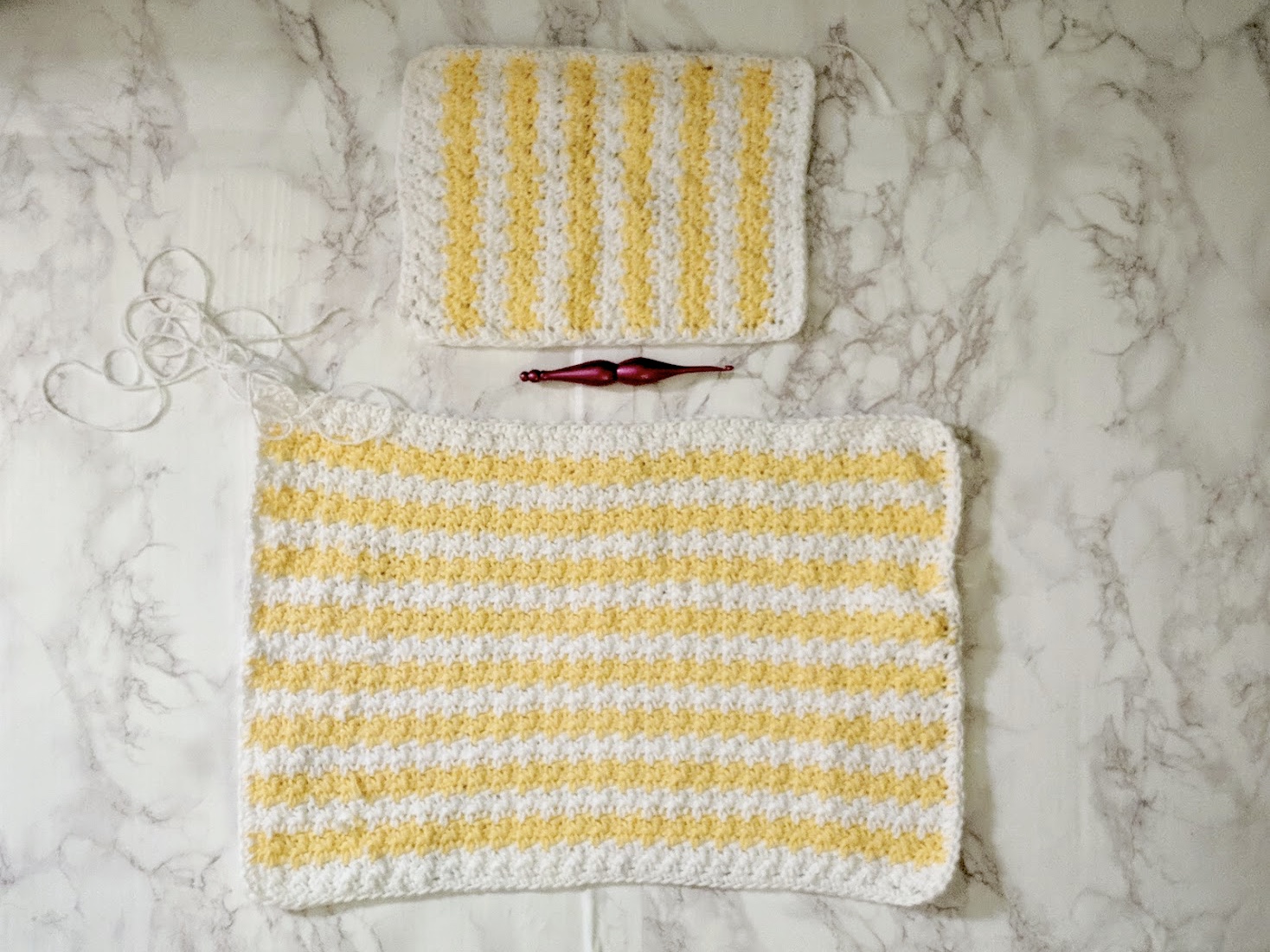
Waist Band
Next you will need to set up the foundation for the waist tie in the middle. In order to do this you will need to know how many stitches are along the bottom of your top section. You can find this number of stitches by taking the number of stripes you have and multiply it by 2. For example, I had 13 stripes of my top section, multiplied by 2, I have 26 stitches. Therefore, you must take your top section and work that number of SC stitches along the bottom of the top section. Personally, I did 4 rows of SC for the waistband, but you can make it however thick you’d like.
RND 2: 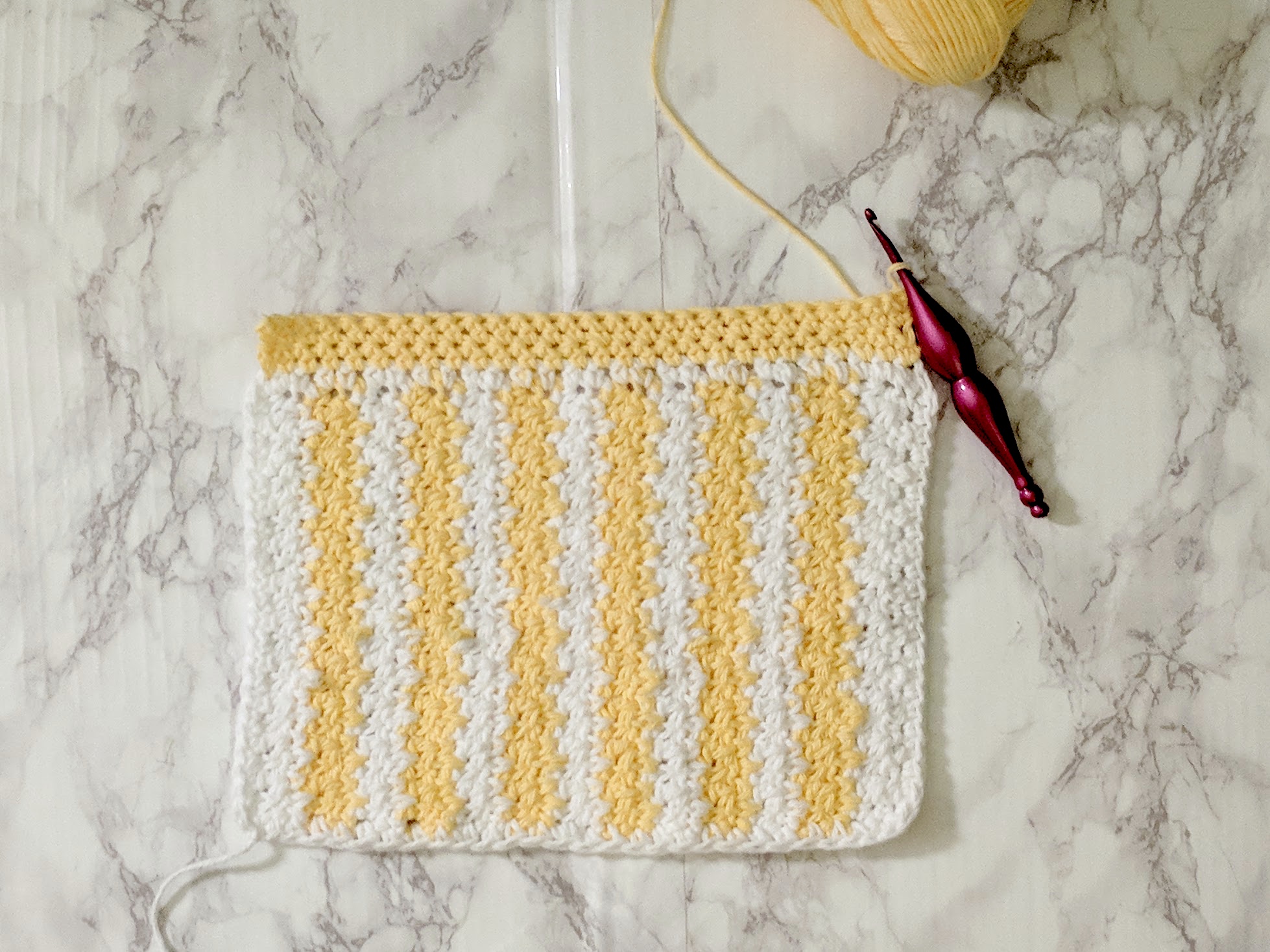
Next you will need to attach your bottom section onto the waist band. As you know, the bottom section is larger than your top section, therefore when you are sewing the two together you are going to need to double up on some stitches in order to make the bottom section fit onto the waistband. Unfortunately this means that you are going to have to do a little bit of math but I’ll try to make it bearable haha.
For example, as we know my waist band was 26 stitches long. My bottom section had 17 stripes, multiplied by 2, my bottom section is 34 stitches long. This means the bottom section has 8 more stitches than the top section.
Once you have those numbers, you take the number of stitches on your waistband and divide it by the number of stitches you are trying to squeeze in. (For me it was 26 / 8 = 3.25). Obviously I can’t work by .25 of a stitch, so let’s round the number to 3. The number that you are left with is your indication of what stitch to double up on, so when I was sewing my bottom section onto the waistband, I made sure that every 3rd stitch on the waistband I sewed in TWO stitches from the bottom portion. I hope that makes sense! haha
This is what mine looked like after I had completed the top and bottom sections and sewed it onto the waist band.
Trim
As you can also see in that picture, I have added some trim around the edges. I did this by taking my C3 which was an ombre color which is how the trim flows between white and yellow naturally without me having to switch colors. You can achieve this look by chaining 5 and slip stitching into the next stitch. Continue chaining 5 and slip stitching into the next stitch all the way around the apron to get the trim.
Ties
You will need to add ties for the waist and the neck. This step is pretty customizable, for the waist ties, make sure you work it at the same point as your waist band, but it doesn’t necessarily need to be as thick as your waist band. Additionally, the placement of your neck ties is completely up to you! All of the ties can be whatever thickness and length you like based on what is most comfortable for you!
Make sure you weave in your ends and you are done!
